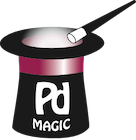Created
Last Updated
byPete d'Oronzio
Print Issue
This article describes how to update the protected portions of a configuration at an on-site installation where the client manages their own server(s).
Explanation
This documentation has been transferred to the Crash Magic manual, available in PDF form or HTML:
Solution
Was this article helpful?
0 out Of 5 Stars
| 5 Stars | 0% | |
| 4 Stars | 0% | |
| 3 Stars | 0% | |
| 2 Stars | 0% | |
| 1 Stars | 0% |
5
